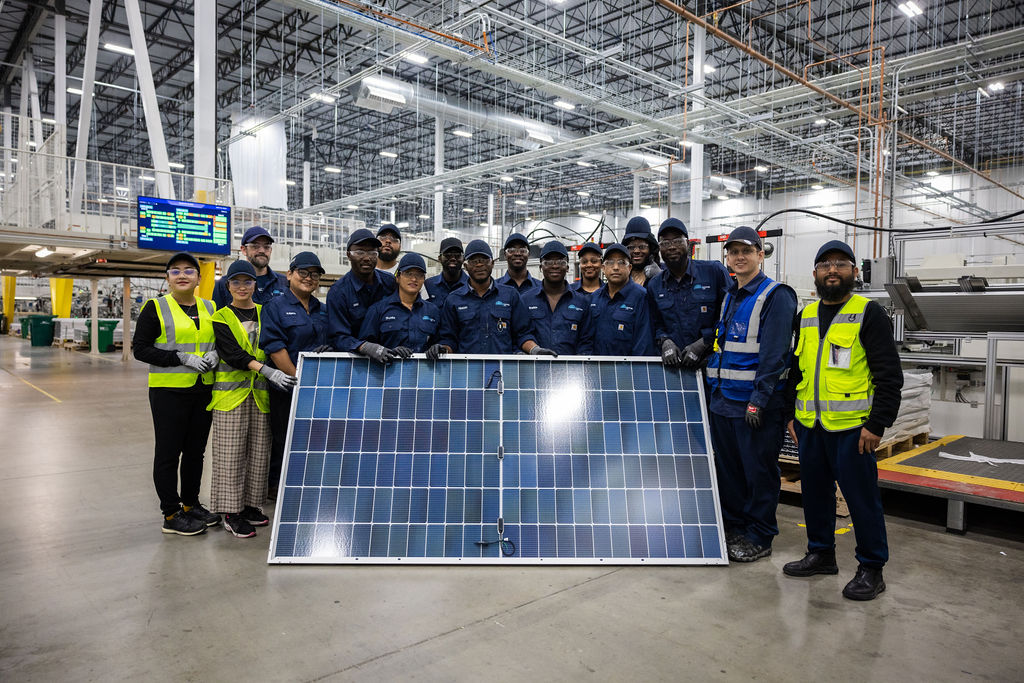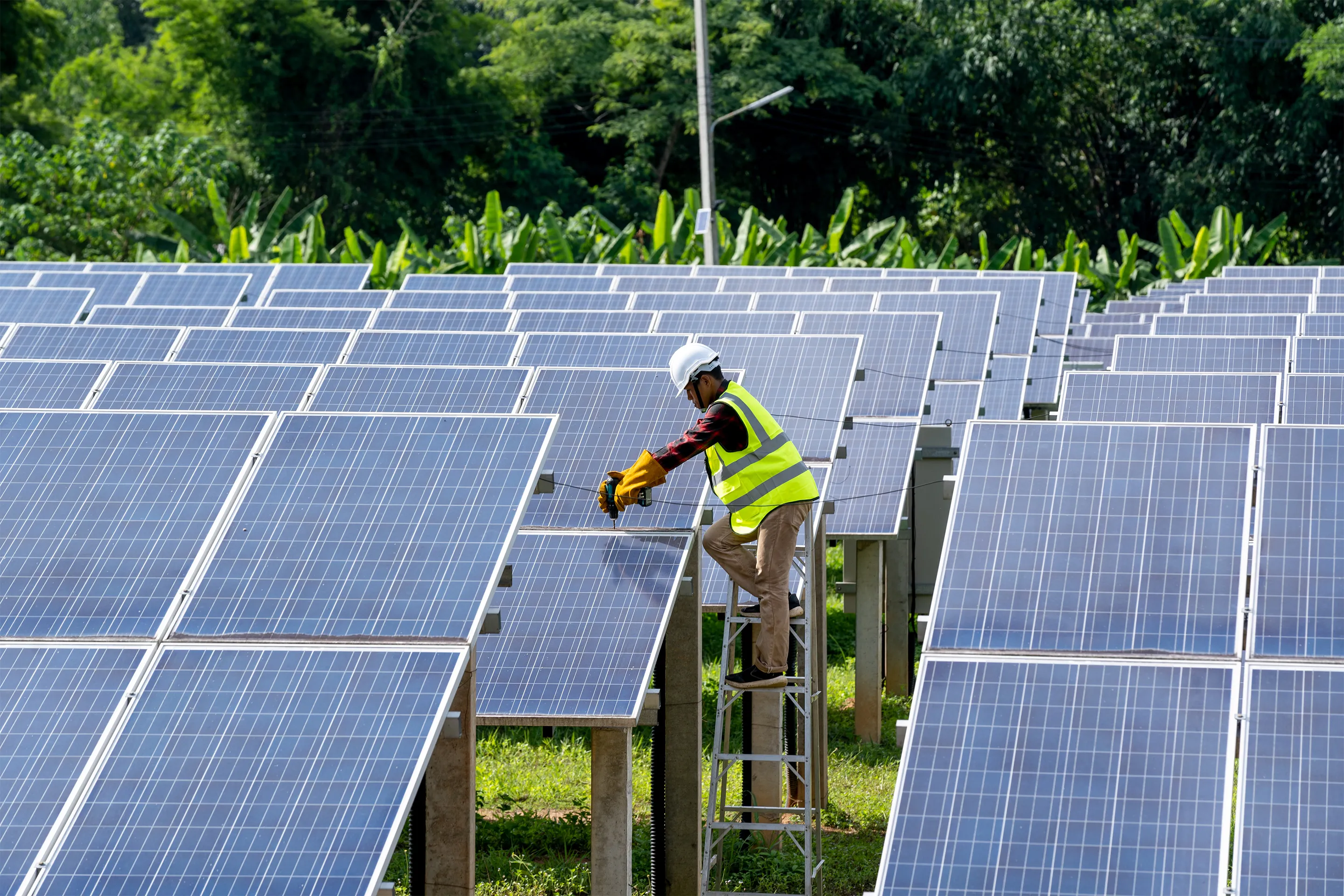Some Known Details About Residential Solar Panels Virginia
Some Known Details About Residential Solar Panels Virginia
Blog Article
Virginia Solar Rebates: Lumina Solar Focuses On Offering Advanced Photovoltaic Solutions For Residences And Services
History and Founding
Have you ever questioned how a photovoltaic panel company springs from a mere spark of motivation into a powerhouse of renewable resource? It frequently begins with a vision-- one sustained by a mix of innovation, decision, and a pinch of serendipity. The journey of many solar companies mirrors the development of the technology itself: from bulky, inefficient panels to streamlined, high-efficiency marvels utilizing the sun's bounty.
The Early Days
In the late 20th century, when solar power was still a niche principle, pioneers planted seeds for what would become a worldwide motion. Picture a small workshop filled with curious engineers, tirelessly explore photovoltaic cells. Their enthusiasm was palpable, typically driven by a desire to combat climate change and lower dependence on fossil fuels.
One such anecdote is about a creator who, motivated by an outdoor camping journey, understood that even in remote locations, the sun might power necessary gadgets. This easy observation triggered a business's objective to democratize access to clean energy.
Establishing Concepts

- Development: Continuously pushing the boundaries of solar technology to enhance performance and toughness.
- Sustainability: Dedicating to environmentally friendly manufacturing and decreasing carbon footprints.
- Accessibility: Making sustainable energy services budget friendly and practical for everyday users.
Milestones in Growth
| Year | Secret Occasion |
|---|---|
| 1985 | Company established in a little garage, focusing on research and development. |
| 1995 | Commercial solar panel item launched, gaining local attention. |
| 2005 | Broadened to global markets, embracing international renewable resource goals. |
| 2015 | Introduced innovative solar panel technology with boosted energy conversion. |
Isn't it fascinating how these incremental steps, frequently neglected, form the energy landscape today? The solar panel business story is not almost innovation; it has to do with a ruthless mission for a brighter, cleaner future.

Developments in Photovoltaic Panel Technologies
Ever noticed how click here some photovoltaic panels shine brighter and last longer? It's not magic; it's the science of photovoltaic performance. Modern solar panel companies invest heavily in innovations like bifacial cells, which record sunshine from both sides, increasing energy harvest without expanding roof area. Have you ever wondered why some panels perform much better on cloudy days? That is because of advances in thin-film solar technology, which flourishes under diffused light conditions.
Item Variations Customized to Unique Needs
One size never ever fits all. Photovoltaic panel suppliers now use:
- Monocrystalline panels for optimum performance and streamlined looks, ideal for space-constrained roofs.
- Polycrystalline panels, which provide a cost-efficient option without sacrificing excessive output.
- Building-integrated photovoltaics (BIPV), combining solar tech flawlessly into architectural elements like windows and exteriors.
Choosing the ideal item isn't practically in advance cost; it has to do with matching your environment, energy goals, and long-lasting savings. For example, homes shaded by trees need panels that master low-light circumstances, something many overlook till energy costs climb all of a sudden.
Technical Tips for Optimal Choice
- Examine the temperature level coefficient-- lower worths imply panels lose less efficiency on hot days.
- Look for panels with enhanced anti-reflective finishes to make the most of light absorption.
- Think about the panel's guarantee not just for flaws, but for guaranteed power output over decades.
- Do not undervalue the value of the inverter innovation matched with the panels; it can make or break your system's efficiency.
Beyond Panels: Emerging Patterns
Envision solar panels that change their angle instantly to chase after the sun-- tracking systems are becoming more available, increasing yield considerably. Or solar tiles that blend undetectably into your roofline, changing your home into a quiet, self-dependent power generator. These innovations are reshaping what a photovoltaic panel business offers-- not just products, however incorporated energy solutions.
Market Existence and Global Operations
Ever question why some photovoltaic panel companies appear to sprout up in every corner of the globe while others hardly make a ripple? The distinction lies not just in technology but in mastering the art of browsing varied markets. Expanding globally resembles planting seeds in various environments-- you need to comprehend each environment's distinct conditions to prosper.
Take, for circumstances, the complex dance of logistics and supply chain management. Shipping panels halfway throughout the world isn't just about range; it has to do with timing, customs, tariffs, and adapting to local need fluctuations. A business with robust worldwide operations expects these variables, guaranteeing panels show up on schedule without inflating expenses. This insight is no small accomplishment and often separates industry leaders from followers.
Secret Techniques for Expanding Market Presence
- Localized production: Developing production centers near target markets minimizes shipping delays and import intricacies.
- Strategic partnerships: Teaming up with regional companies speeds up market penetration and constructs trust.
- Adaptive product design: Tailoring photovoltaic panel tech to weather, sun strength, and infrastructure nuances enhances efficiency and acceptance.
What about the human element? Solar panel business operating internationally should reconcile cultural differences and regulative subtleties without losing sight of their core objective. What works in a sun-drenched desert might falter in a humid coastal area. Often, the most innovative service is simply listening-- taking in local insights to improve technology and technique.
Professionals often recommend a phased rollout instead of a shotgun growth. Why run the risk of overextension when determined development builds sustainable momentum? Scaling carefully suggests balancing aspiration with operational resilience - Solar Panel Company Virginia. After all, in the race for sustainable energy supremacy, persistence can be as important as speed
Environmental Impact and Sustainability Practices
When solar panels initially emerged, many presumed they brought no environmental baggage. Nevertheless, the truth is more nuanced. The production of solar batteries includes uncommon earth metals and energy-intensive processes, which can leave a large carbon footprint before the panels even reach roofs. Yet, the real ecological cost depends greatly on the sustainability practices employed by the solar panel company throughout the lifecycle of their products.
How often do we pause to consider what happens to solar panels at the end of their useful life? Unlike batteries or electronics, photovoltaic panels can last 25-30 years, but disposal and recycling paths stay underdeveloped in lots of areas. A company committed to minimizing environmental harm will have a robust prepare for recycling photovoltaic materials, restoring valuable silicon, glass, and metals to prevent garbage dump accumulation.
Key Sustainability Techniques
- Making use of low-impact manufacturing techniques that lessen water and energy usage.
- Carrying out closed-loop systems to recycle production waste back into new panels.
- Engaging in transparent supply chain audits to guarantee ethical sourcing of basic materials.
- Designing panels for easier disassembly to aid future recycling efforts.
It's worth keeping in mind that some solar business have pioneered ingenious techniques, such as incorporating eco-friendly elements or utilizing less hazardous chemicals during fabrication. This not just decreases environmental strain however also sets a precedent for the industry. The question stays: can the solar industry genuinely pivot towards a circular economy model without sacrificing efficiency or cost?
Specialist Tips for Evaluating Sustainability
- Inquire about the business's commitment to carbon-neutral manufacturing and whether they offset emissions.
- Examine if they partner with licensed recycling centers devoted to solar panel waste.
- Look for openness reports detailing ecological effects and sustainability objectives.
- Consider the durability and warranty of panels as an indirect step of resource performance.
In the end, deciding for solar energy should indicate more than just slashing electrical power expenses; it's about nurturing a future where energy is harvested properly and waste is thoughtfully managed. Solar panel companies that welcome this philosophy not just brighten homes however also cast a brighter light on sustainable innovation.
Report this page